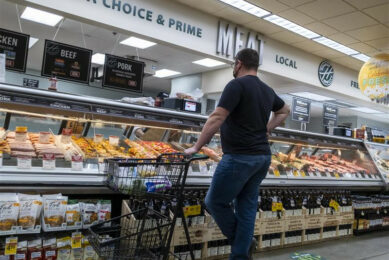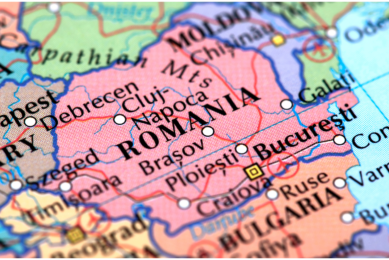US pork prices likely to rise as record drought continues
Long-term prices for pork may rise in the United States as the the country is going through the worst drought in 24 years. Effects now felt on grain markets will be felt by both pork producers as well as consumers.
The US futures market for corn, soybeans and wheat saw sharp increases on Monday. After a weekend full of drought and excessive heat, the forecast for the next seven days gives much the same picture. The prognosis for farmers is grim as fields become drier by the day.
Corn futures were reported to be trading $0.29 higher on Monday morning. For soybeans, futures were trading $0.34 to $0.40 higher. Wheat futures were trading $0.19 to $0.30 higher early morning.
The CME Group Daily Livestock Report, published by Steve Meyer and Len Steiner, informed that soybean meal prices are up 36% from last year and distillers’ grains with solubles (DDGS) are also up 35%.
Weather conditions
As of last Tuesday, 61% of land in the lower 48 states was experiencing drought conditions – stretching from Nevada to South Carolina – the highest percentage in the 12-year record of the US Drought Monitor.
US authorities have already declared more than 1,000 counties in 26 states as natural disaster areas. A county is generally qualified as a natural disaster area if it has suffered severe drought for eight consecutive weeks. Farmers are then eligible for low-interest emergency loans from the US Department of Agriculture’s Farm Service Agency.
These emergency loans come after some areas of the USA suffered record-setting heat waves, killer storms and blazing wildfires.
Hurting
The Daily Livestock Report also stated that a sharp rise in feed costs and softer wholesale pork prices may be pushing more sows to market on the short term.
This view is shared by Dave Miller, director of research and commodity services at the Iowa Farm Bureau. He told CNN that consumers will be hurting as well down the line when they feel the drought in their pocketbooks. He added that meat prices could fall at first if farmers slaughter more animals to decrease the cost of buying feed.
The hot weather has been reducing pork demand, the CME report states. “High temperatures across the country appear to have limited grilling demand, with prices for ribs and loins down sharply last week.”
With feed costs for this fall and winter being higher than hog futures prices, the outlook is grim for all. Pork producers may not have a profitable season – and consumers will end up paying more than usual.
“It’s likely that in three to six months from now, you will start seeing an increase in prices in the meat case,” Miller said. “There will be a quicker impact on eggs and poultry because the production cycle is shorter.”
Feed outlook
Global coarse grain production forecast for 2012/13 is down 48.0 million tonnes this month to 1,183.6 million, mostly due to sharply reduced prospects for US corn, according to the July 13 Feed Outlook of the US Department of Agriculture.
To put the US corn crop cut into perspective, this month’s decline is more than twice as big as Argentina’s entire last corn crop.
Related websites:
• Daily Livestock Report
• CNN
• United States Department of Agriculture (USDA)











